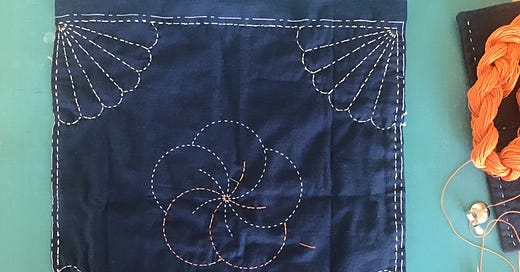As you might already know, I am addicted to making dishcloths. Put an embroidery hoop, floss, a needle, and a pair of scissors in my lap and they will surely be applied to a dishcloth. Now why do I love them so much? They are a combination of 1950’s nostalgia along with the funny anthropomorphic designs of smiling plates, dancing cutlery, and mindless hours of outline stitch. They are sure to put a smile on anyone’s face. They are my go to project for sitting down and watching a baseball game, mindless enough so I can keep track of the Giants, but still giving a feeling of not totally wasting my time in front of the tube.
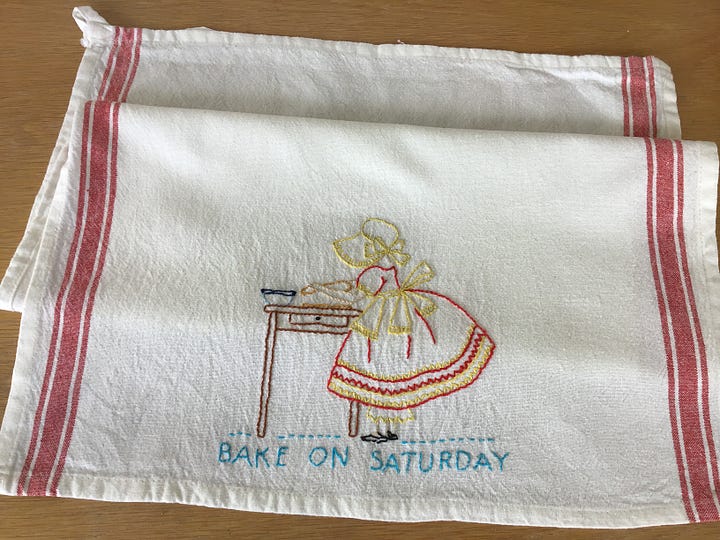
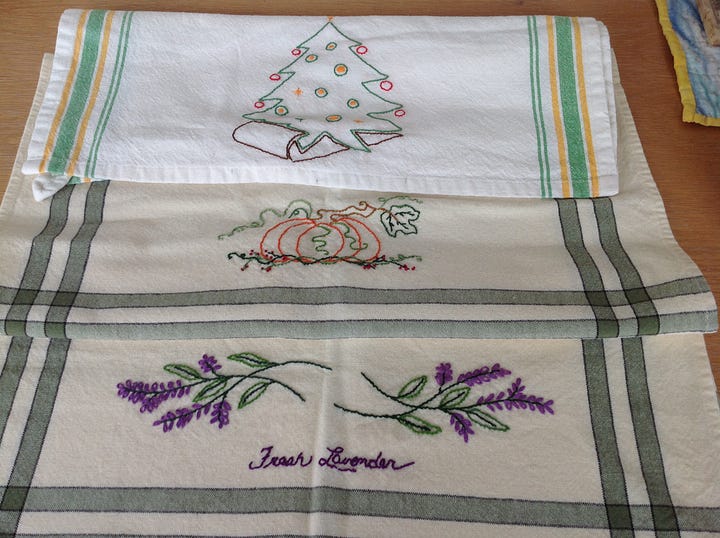
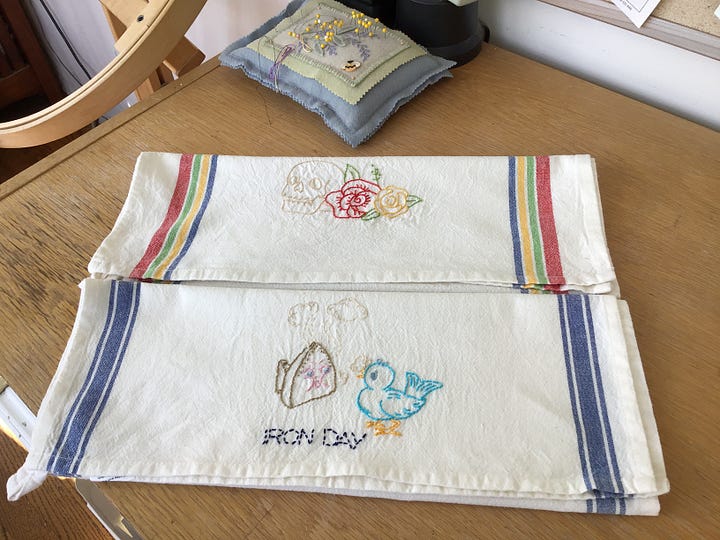
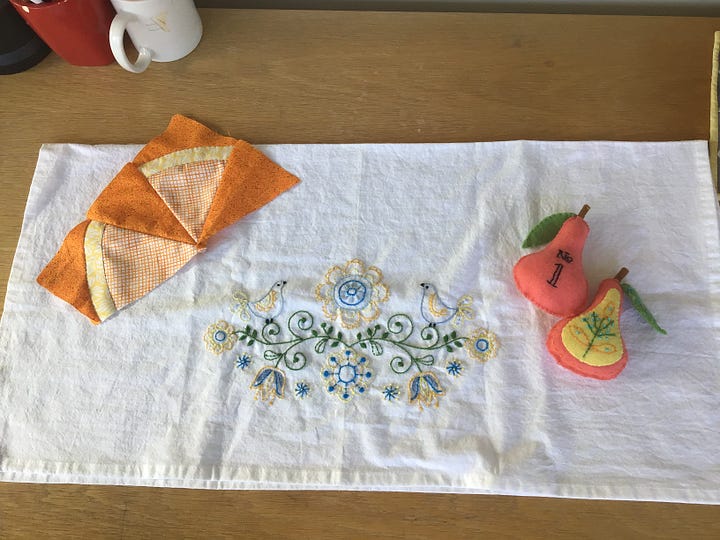
After my friend Janet introduced me to Sashiko, I have to admit my allegiance veered off in a different direction. The Sashiko stitch grabbed me by the fingers and wouldn’t let go. After years of complex embroidery patterns, I dropped back to simplicity. Just doing a simple running stitch to develop all those delightfully geometric Sashiko patterns overcame my love of kitschy dishtowel patterns and I started using Sashiko to decorate curtains, napkins, household objects, and for mending clothing. Soon it became another version of mindless stitching that I could do in front of the tube and feel productive.
So, bounce forward a few months and imagine my surprise when I discovered the Japanese version of American dishtowels, the Hana Funkin (pronounced hah-nah foo-keen). Hana Fukin are used by the Japanese in place of paper towels in bathrooms. Japanese carry a small towel with them to use in public restrooms and more often than not, they are decorated with Sashiko patterns. I signed up for an on line workshop held by a Sashiko teacher in Kyoto (Sashiko Lab Link ) so I could learn woven Sashiko (Kuguri-Sashi) and the project she started us on was a Hana Fukin.

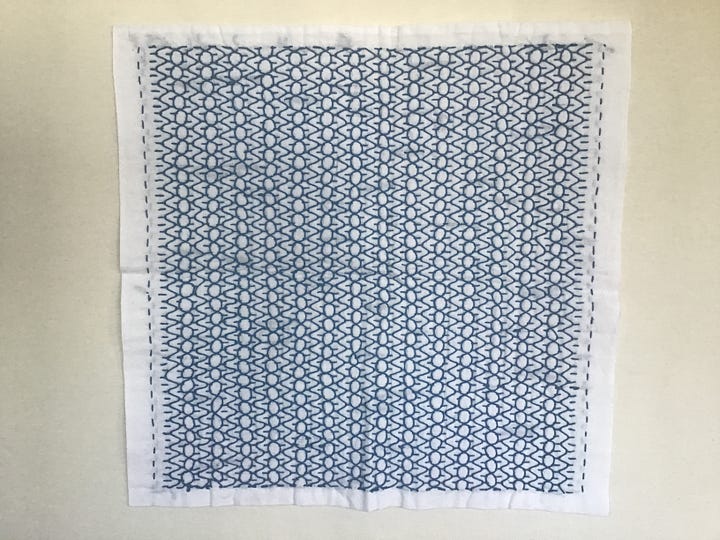
This opened up a whole new world of dishcloths for me and I jumped right in. I started buying the kits that came with a preprinted pattern on cloth that I hemmed and stitched. This was the basis for learning different Sashiko techniques and patterns, and they had some funny little fish and cats to add to my collection. Pretty soon my Hana Fukin stitching rivaled my American dishcloth obsession.
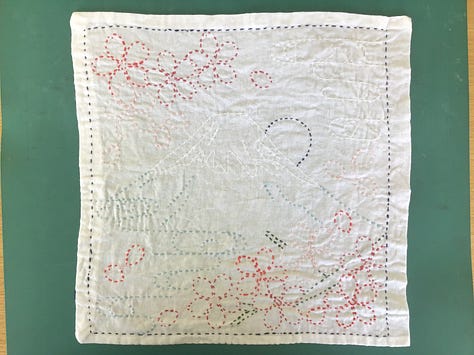
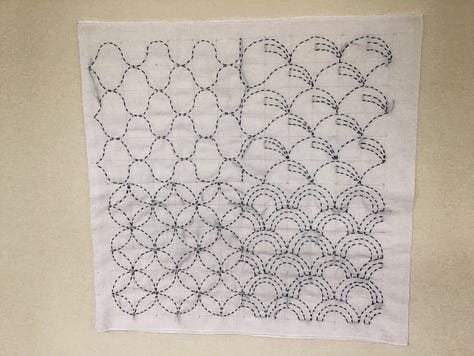
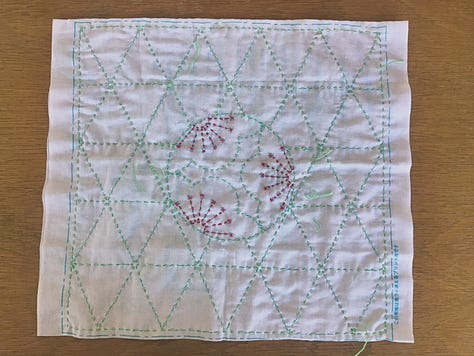
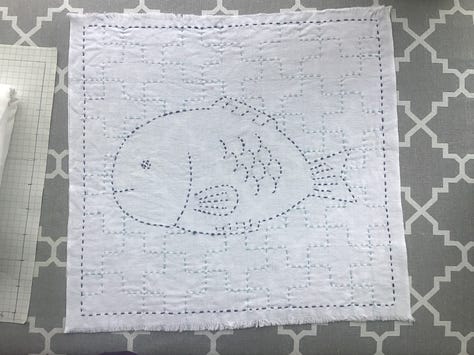
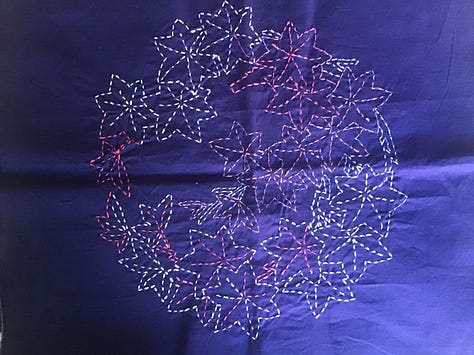
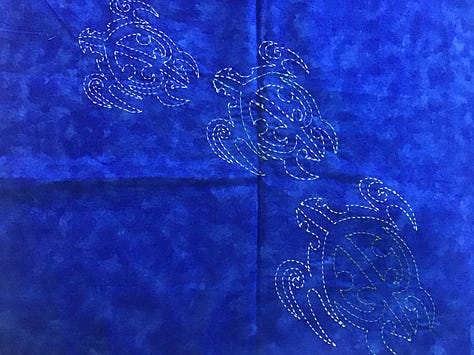
Along the way I learned how to interpret the directions included in the kits. These ensure that the Sashiko thread is used in the most economic fashion as Japanese stitchers do not believe in wasting precious thread.
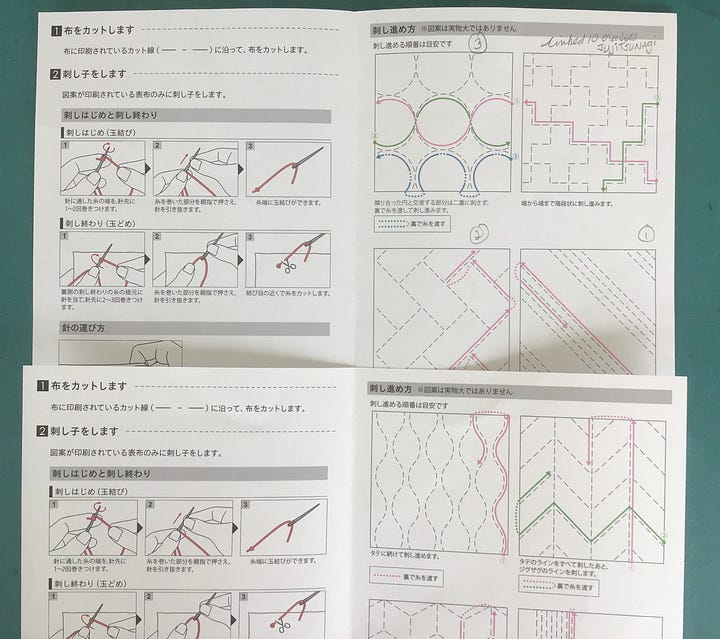
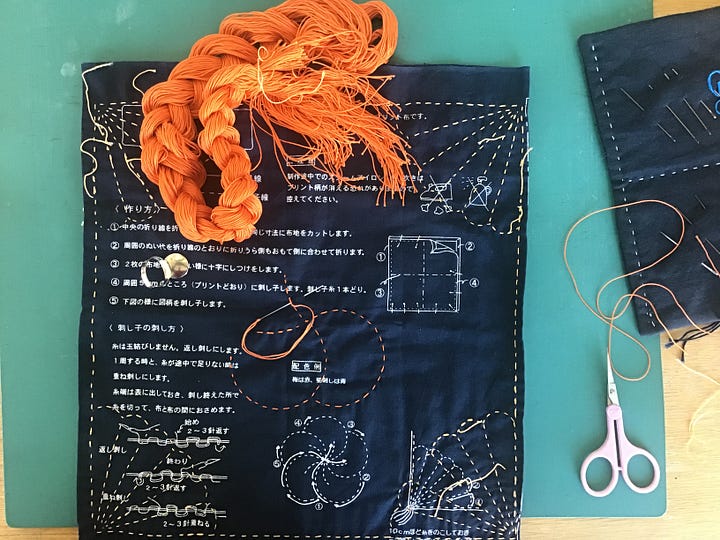
As you can see, the directions included in Hana Fukin kits come in two different variations. One is a separate printed paper insert, the other is printed on the cloth itself and washes off when you launder the finished Hana Fukin. Both show the directions you stitch to give the most economic use of both thread and time and give you a finished project that looks beautiful from the front AND the back. Unfortunately it is written in Japanese but I have figured out a way to decipher it and apply it to American ways of stitching.
This is the project we are doing at New Pieces in Berkeley on Monday, June 3 at 10:30 to 12:30.
This is a pattern that is both a little challenging to an experienced Sashiko stitcher and not too complicated for a beginner . The flower (Ume or plum blossom) and fan (Ogi) motifs give the student the opportunity to learn some traditional patterns and I will teach the basting technique to prepare the Hana Funkin for stitching.
Call New Pieces at 510-527-6779 to sign up. Link This class is part of their monthly Sashiko Stitch In so it is priced at only $20 plus the kit fee which is a real bargain.
Hope to see you there but be warned, Hana Funkin can become addictive. Ask me how I know.

